Related Research Articles

Auschwitz concentration camp was a complex of over 40 concentration and extermination camps operated by Nazi Germany in occupied Poland during World War II and the Holocaust. It consisted of Auschwitz I, the main camp (Stammlager) in Oświęcim; Auschwitz II-Birkenau, a concentration and extermination camp with gas chambers; Auschwitz III-Monowitz, a labour camp for the chemical conglomerate IG Farben; and dozens of subcamps. The camps became a major site of the Nazis' Final Solution to the Jewish question.

Nazi Germany used six extermination camps, also called death camps, or killing centers, in Central Europe during World War II to systematically murder over 2.7 million people – mostly Jews – in the Holocaust. The victims of death camps were primarily murdered by gassing, either in permanent installations constructed for this specific purpose, or by means of gas vans. The six extermination camps were Chełmno, Belzec, Sobibor, Treblinka, Majdanek and Auschwitz-Birkenau. Extermination through labour was also used at the Auschwitz and Majdanek death camps. Millions were also murdered in concentration camps, in the Aktion T4, or directly on site.

The United States Holocaust Memorial Museum (USHMM) is the United States' official memorial to the Holocaust. Adjacent to the National Mall in Washington, D.C., the USHMM provides for the documentation, study, and interpretation of Holocaust history. It is dedicated to helping leaders and citizens of the world confront hatred, prevent genocide, promote human dignity, and strengthen democracy.

The Museum of Jewish Heritage, located in Battery Park City in Manhattan, New York City, is a living memorial to those murdered in the Holocaust. The museum has received more than 2 million visitors since opening in 1997. The mission statement of the museum is "to educate people of all ages and backgrounds about the broad tapestry of Jewish life in the 20th and 21st centuries — before, during, and after the Holocaust."

Czesława Kwoka was a Polish Catholic girl who was murdered at the age of 14 in Auschwitz. One of the thousands of minor child and teen victims of German World War II war crimes against ethnic Poles in German-occupied Poland, she is among those memorialized in an Auschwitz-Birkenau State Museum exhibit, "Block no. 6: Exhibition: The Life of the Prisoners".

Wilhelm Brasse was a Polish professional photographer and a prisoner in Auschwitz during World War II. He became known as the "famous photographer of Auschwitz concentration camp." His life and work were the subject of the 2005 Polish television documentary film The Portraitist (Portrecista), which first aired in the Proud to Present series on the Polish TVP1 on 1 January 2006.
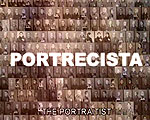
The Portraitist is a 2005 Polish television documentary film about the life and work of Wilhelm Brasse, the famous "photographer of Auschwitz", made for TVP1, Poland, which first aired in its "Proud to Present" series on January 1, 2006. It also premiered at the Polish Film Festival, at the West London Synagogue, in London, on March 19, 2007.

Piotr Mateusz Andrzej Cywiński, is a Polish historian, medievalist and social activist. He has served as Director of the Auschwitz-Birkenau State Museum since 2006. From 2000 to 2010, he was the Director of the Catholic Intelligentsia Club (KIK) in Warsaw.

The Auschwitz-Birkenau State Museum is a museum on the site of the Auschwitz concentration camp in Oświęcim, Poland.
Auschwitz-Birkenau Foundation, created in 2009 by Wladyslaw Bartoszewski, aims to gather and manage an endowment from which income shall finance the long-term, global preservation program of the Auschwitz-Birkenau Memorial Site.

Alice Lok Cahana was a Hungarian Holocaust survivor. Lok Cahana was a teenage inmate in the Auschwitz-Birkenau, Guben and Bergen-Belsen camps: her most well-known works are her writings and abstract paintings about the Holocaust.
Elly Kleinman is an American business executive and philanthropist best known as the founder and chief executive officer of the Americare Companies. He is the co-chairman of the Ohel Board of Directors, Chairman of Camp Kaylie Board of Trustees, and a former trustee of Maimonides Medical Center. In 2012 he was the chairman of 12th Siyum HaShas.
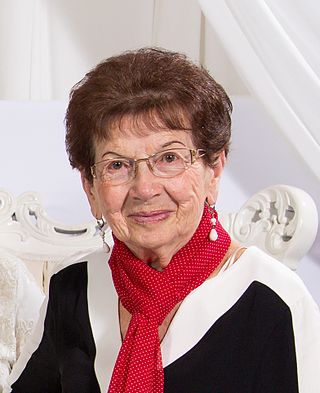
Bat-Sheva Dagan is a Polish-Israeli Holocaust survivor, educator, author, and speaker. Born in Łódź, Poland, she was incarcerated in a ghetto in Radom with her parents and two sisters in 1940. After her parents and a sister were deported and murdered in Treblinka in August 1942, she escaped to Germany, but was discovered, imprisoned, and deported to Auschwitz in May 1943. After spending 20 months in Auschwitz, she survived two death marches and was liberated by British troops in May 1945. She was the only survivor of her family. She and her husband settled in Israel, where she taught kindergarten and later obtained degrees in educational counseling and psychology. She went on to author books, poems, and songs for children and young adults on Holocaust themes, and developed psychological and pedagogical methods for teaching the Holocaust to children. She is considered a pioneer in children's Holocaust education.
Danuta Czech was a Polish Holocaust historian and deputy director of the Auschwitz-Birkenau State Museum in Oświęcim, Poland. She is known for her book The Auschwitz Chronicle: 1939–1945 (1990).
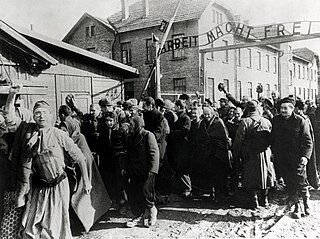
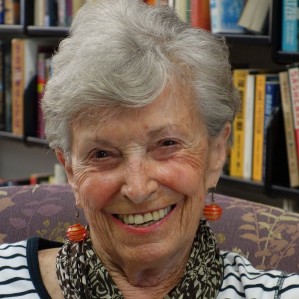
Susan E. Cernyak-Spatz was an Austrian-born professor of German language and literature at the University of North Carolina at Charlotte. She was a Holocaust survivor. Her memoir, Protective Custody: Prisoner 34042, was published in 2005.
Kalman Sultanik was a prominent Zionist figure who was active in numerous Jewish and Zionist organizations throughout his life. He was a member of the United States Holocaust Memorial Council, served on the Executive Committee of the Jewish Agency for Israel and became vice president of the World Jewish Congress as well as chairman of the World Zionist Organization American Section. He founded the Jerusalem Confederation House and led the World Confederation of United Zionists for decades. Sultanik was also active in assisting the Polish community of Holocaust survivors.
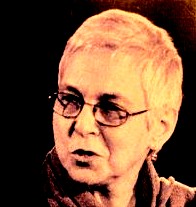
Joan Ringelheim was the Research Director of the Permanent Exhibition, Director of Education and Director of Oral History at the United States Holocaust Memorial Museum, where she oversaw its survivor testimony collection. She had worked on creating the museum's permanent exhibit. She would donate her collection which came, in part, from her organisation of the first conference about women, during the Holocaust.
Maria Zalewska is a media, memory, and Holocaust scholar who focuses on the relationship between interactive technologies, visual culture, and Holocaust memory. She currently serves as the executive director of the Auschwitz-Birkenau Memorial Foundation, a New York-based non-profit organization.
References
- ↑ "Sara J. Bloomfield". United States Holocaust Memorial Museum . Retrieved January 29, 2016.
- ↑ Nathan Guttman (August 1, 2013). "Holocaust Museum Turns 20 as Sara Bloomfield Ends Controversies". The Forward . Retrieved January 29, 2016.
- ↑ "Exodus Refugee Ship Flag Finds Safe Haven at Holocaust Museum". The New York Times . January 20, 2016. Retrieved January 29, 2016.
- ↑ "Clevelander's awarded national Holocaust award". WKYC . May 18, 2015. Retrieved January 29, 2016.
- ↑ "Sara J. Bloomfield". Cleveland Jewish News . Retrieved January 29, 2016.
- ↑ "Sara J. Bloomfield — United States Holocaust Memorial Museum". www.ushmm.org. Retrieved January 14, 2019.
- 1 2 "IAC Members / The International Auschwitz Council / Museum / Auschwitz-Birkenau". auschwitz.org. Retrieved January 14, 2019.
- ↑ "Joan Ringelheim, scholar of women during the Holocaust, dies at 82". Washington Post. ISSN 0190-8286 . Retrieved October 30, 2021.
- ↑ Bloomfield, Sara J. (July 13, 2016). "Elie Wiesel's Enduring Legacy". Huffington Post. Retrieved January 14, 2019.
- ↑ "Poland was once a leader in Shoah commemoration". blogs.timesofisrael.com. Retrieved January 14, 2019.